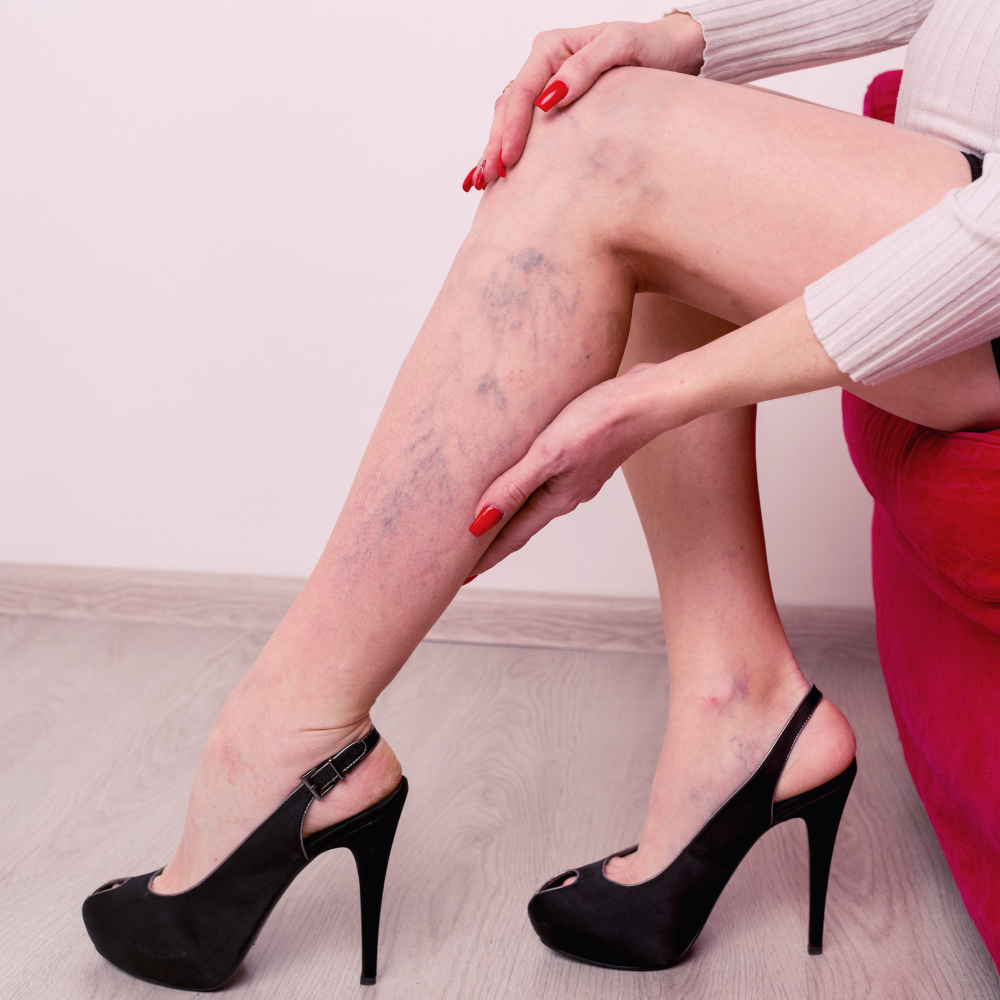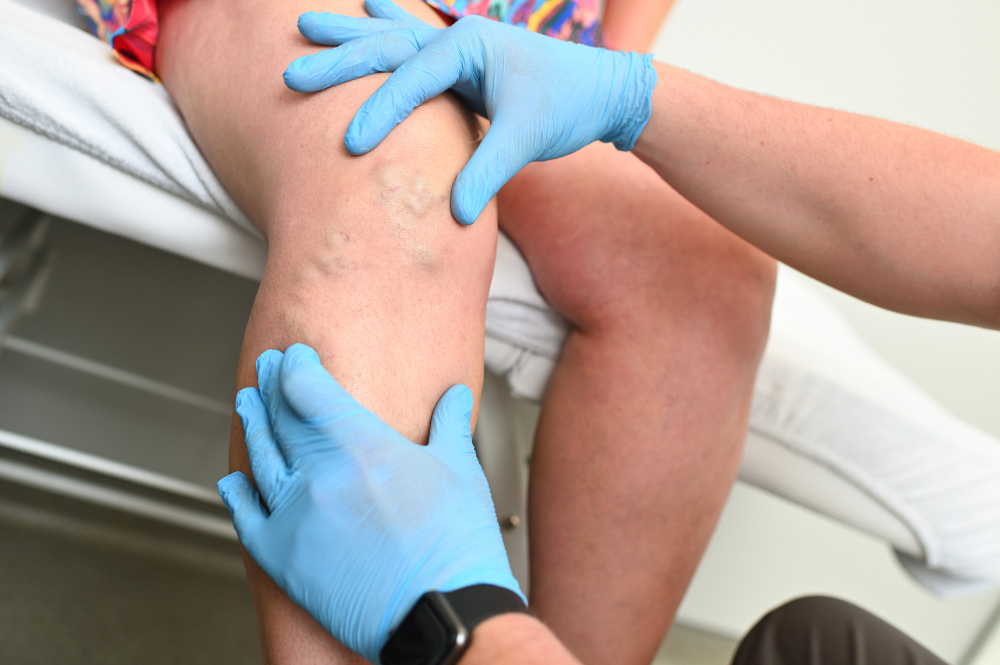Spider Vein Treatment

Spider veins are dilated blood vessels that can be seen through the skin and appear as red, blue, or purple lines. They are usually not a cause for concern and do not generally result in any symptoms. However, in some cases, they may cause itching, burning sensations, or discomfort, particularly in the legs. Various treatments are available to eliminate spider veins and improve the appearance of your skin, which can also help you feel more confident.

Why get a spider vein treatment?
Spider veins, which should not be mistaken for varicose veins, are blood vessels that have been stretched or dilated. They often have a branching appearance and are typically found on the thigh, lower leg, and occasionally on the face. These veins tend to worsen and become more numerous as one gets older. If you have noticeable spider veins and desire to eliminate them, a suitable option may be a treatment specifically designed for spider veins.
Here are a few advantages of undergoing spider vein treatments:
- Remove the appearance of spider veins
- Be more at ease when you choose to wear shorts, skirts, swimwear, and other types of clothing that reveal your legs.
Symptoms of varicose veins
Complications may arise if there are defective valves found in the deep veins that pass through the muscles in the calf. Potential issues can include:
- aching in the legs
- skin rashes such as eczema
- Brownish discoloration on the skin’s surface, resulting from the bursting of tiny blood vessels.
- skin ulcers
- thrombophlebitis refers to the development of blood clots within veins.
Professional treatment
There are numerous professional methods available to potentially diminish the visibility of spider veins or completely eliminate them. Some of these treatments include:
Sclerotherapy and closure system
Sclerotherapy consists of direct injection of an irritant into the affected vein, causing the veins to stick together and preventing blood flow to the area.
This method has the ability to decrease inflammation and make the vein smaller. Eventually, the spider vein will become less noticeable or disappear completely. It may require multiple treatments to achieve the desired outcome.
Closure system treatment is a procedure that is comparable to sclerotherapy. It includes the injection of a sticky substance into the veins that are affected. This substance works by sealing off the vein from the flow of blood, which ultimately leads to the fading or disappearance of spider veins over time.
Similar to sclerotherapy, multiple treatments may be necessary for an individual to achieve the desired result.
Laser treatment

Laser therapy is particularly successful for small veins that are situated near the surface of the skin, particularly on the face.
The laser beam is directed towards the veins that are affected, leading to the clotting and eventual dehydration of those veins.
Laser treatment is regarded as a noninvasive approach unlike sclerotherapy or closure system therapy. Nevertheless, it may not be a suitable choice for the treatment of bigger spider veins.
Radiofrequency occlusion.
In order to treat the vein, a tiny tube called a catheter is placed inside it. The catheter then emits radiofrequency energy, which heats up the vein wall and causes it to collapse and close off. This procedure is typically performed outside of a hospital, either in an outpatient facility or an office, and in some cases, the patient may be given local anesthesia.
Endovenous laser therapy
Endovenous laser therapy (EVLT), known as endovenous laser ablation, is commonly utilized for the treatment of varicose veins. However, it might also be a viable alternative for addressing larger spider veins.
The process involves placing a laser fiber into the impacted blood vessel through a small incision. As a result of the laser’s heat, the vein will slowly break down. It may take a few months before it completely vanishes.
EVLT is categorized as a more invasive procedure compared to other methods since it requires a clinician to make an incision in your skin. Consequently, local anesthesia is typically administered during this process.
Surgery for varicose veins
Usually, surgically treating varicose major surface veins (such as long or short saphenous veins) involves making several small cuts instead of one large cut. The incisions can be made in different areas, such as the groin or behind the knee, depending on the location of the varicose vein.
Surgical techniques include:
- The surgeon performs ligation and stripping to treat the vein. Ligation involves cutting and tying off the vein, while stripping involves inserting a thin instrument into the vein through a small incision, and then removing the vein through another incision.
- In phlebectomy, the surgeon creates small cuts and uses a unique hook to extract the veins.
Spider veins vs. varicose veins

Spider veins are not actually veins. They are smaller blood vessels such as capillaries, venules, and arterioles that have been damaged. These blood vessels connect with larger ones in your circulatory system. However, the term “spider veins” is commonly used and easy to remember.
Varicose veins refer to veins that have been harmed. Veins are bigger blood vessels responsible for transporting deoxygenated blood towards the heart. Varicose veins are typically larger in size compared to spider veins and have a tendency to protrude from the skin’s surface.
Spider veins rarely result in any symptoms, prompting individuals to pursue treatment mainly for cosmetic purposes. On the other hand, varicose veins frequently lead to symptoms such as leg pain and discomfort, which motivates people to seek treatment either to improve their appearance or alleviate these symptoms.
A significant number of individuals with spider veins commonly have varicose veins as well, as they both stem from similar causes and risk factors.
A note from rehabturk
Spider veins appear when blood vessels become weak or injured. While they are generally not a matter of worry, some individuals may seek to eliminate them for aesthetic purposes. As they do not appear to have any negative impacts on health, they are classified as a cosmetic issue.
There are a few choices to think about when it comes to getting rid of them, but Sclerotherapy is currently the top choice and most effective treatment.
Treatment in Türkiye:
The medical staff of surgical teams, doctors and consultants in Rehab Türk can provide the best treatment options and free consultations – by striving to keep abreast of the latest medical technologies and methods.
